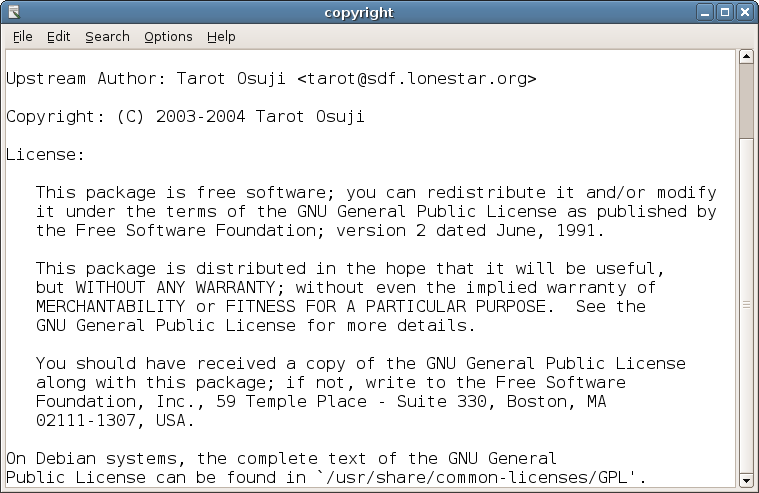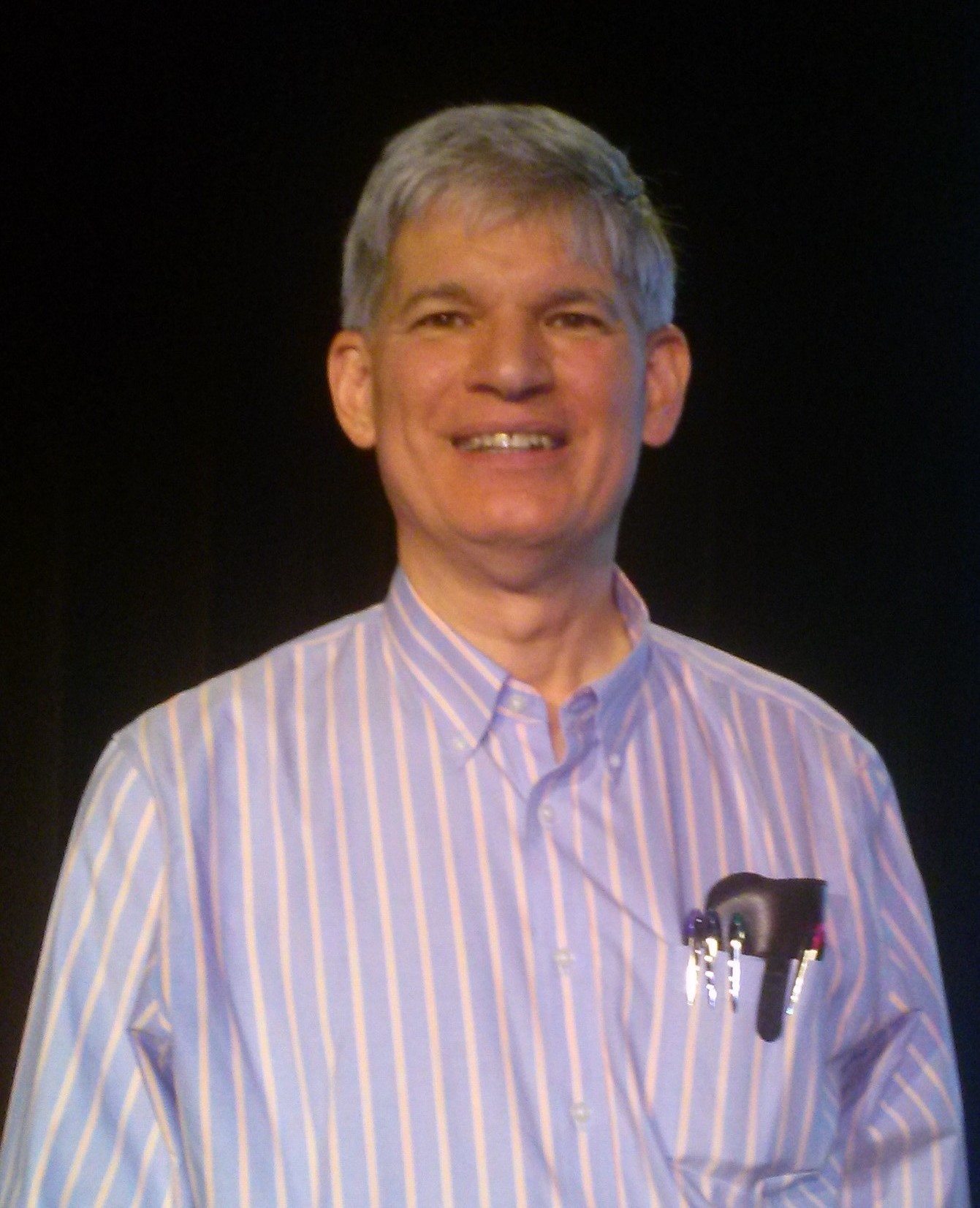|
SETEDIT
SETEDIT is a computer software text editor that is an open source, multi-platform clone of the editor of Borland's Turbo* IDEs, with several improvements. According to the project page, it was started in 1996. It is not vi or emacs, but may be familiar to DOS users, as noted in reviews. It is the editor used by RHIDE. SETEDIT is free software Free software, libre software, libreware sometimes known as freedom-respecting software is computer software distributed open-source license, under terms that allow users to run the software for any purpose as well as to study, change, distribut ... released under the GPL-2.0-or-later license.File ''copyright'' in setedit_0.5.8-1.tar.gz References External links SETEDIT Project Page Free text editors Software using the GNU General Public License {{free-software-stub Software using Turbo Vision ... [...More Info...] [...Related Items...] OR: [Wikipedia] [Google] [Baidu] |
RHIDE
RHIDE (short for Robert's Hierarchical Integrated Development Environment) is a free integrated development environment (IDE) for programming in C, C++ and Pascal under DOS and Linux. It was developed in the 1990s by Robert Hoehne and is primarily intended to work with the DJGPP compiler suite for DOS. The environment is text-based and strongly resembles the interface of Borland IDEs such as Turbo C++ 3.1. RHIDE uses the SETEDIT text editor and the Turbo Vision user interface library. Features * Support for C, C++, and Pascal programming; * Integration with the DJGPP port of the GCC compiler; * Built-in debugger; * Syntax highlighting; * Configurable user interface and build options; * Interface modeled after Borland's Turbo Vision system. Technical details RHIDE is built on top of the SETEDIT editor and works primarily in a text-mode interface. It is designed for use on IBM PC-compatible systems and supports both DOS (via DJGPP) and Linux environments. Status Devel ... [...More Info...] [...Related Items...] OR: [Wikipedia] [Google] [Baidu] |
Computer Software
Software consists of computer programs that instruct the Execution (computing), execution of a computer. Software also includes design documents and specifications. The history of software is closely tied to the development of digital computers in the mid-20th century. Early programs were written in the machine language specific to the hardware. The introduction of high-level programming languages in 1958 allowed for more human-readable instructions, making software development easier and more portable across different computer architectures. Software in a programming language is run through a compiler or Interpreter (computing), interpreter to execution (computing), execute on the architecture's hardware. Over time, software has become complex, owing to developments in Computer network, networking, operating systems, and databases. Software can generally be categorized into two main types: # operating systems, which manage hardware resources and provide services for applicat ... [...More Info...] [...Related Items...] OR: [Wikipedia] [Google] [Baidu] |
Text Editor
A text editor is a type of computer program that edits plain text. An example of such program is "notepad" software (e.g. Windows Notepad). Text editors are provided with operating systems and software development packages, and can be used to change files such as configuration files, documentation files and programming language source code. Plain text and rich text There are important differences between plain text (created and edited by text editors) and rich text (such as that created by word processors or desktop publishing software). Plain text exclusively consists of character representation. Each character is represented by a fixed-length sequence of one, two, or four bytes, or as a variable-length sequence of one to four bytes, in accordance to specific character encoding conventions, such as ASCII, ISO/IEC 2022, ISO/IEC 2022, Shift JIS, UTF-8, or UTF-16. These conventions define many printable characters, but also whitespace character, non-printing characters th ... [...More Info...] [...Related Items...] OR: [Wikipedia] [Google] [Baidu] |
Vi (text Editor)
vi (pronounced as two letters, ) is a screen-oriented text editor originally created for the Unix operating system. The portable subset of the behavior of vi and programs based on it, and the ex (text editor), ex editor language supported within these programs, is described by (and thus standardized by) the Single Unix Specification and POSIX. The original code for vi was written by Bill Joy in 1976 as the visual mode (user interface), mode for the ex line editor that Joy had written with Chuck Haley. Joy's ex 1.1 was released as part of the first Berkeley Software Distribution (BSD) Unix release in March 1978. It was not until version 2.0 of ex, released as part of Second BSD in May 1979 that the editor was installed under the name "vi" (which took users straight into ex's visual mode), and the name by which it is known today. Some current implementations of vi can trace their source code ancestry to Bill Joy; others are completely new, largely compatible reimplementations. Th ... [...More Info...] [...Related Items...] OR: [Wikipedia] [Google] [Baidu] |
Emacs
Emacs (), originally named EMACS (an acronym for "Editor Macros"), is a family of text editors that are characterized by their extensibility. The manual for the most widely used variant, GNU Emacs, describes it as "the extensible, customizable, self-documenting, real-time display editor". Development of the first Emacs began in the mid-1970s, and work on GNU Emacs, directly descended from the original, is ongoing; its latest version is , released . Emacs has over 10,000 built-in commands and its user interface allows the user to combine these commands into macro (computer science), macros to automate work. Implementations of Emacs typically feature a dialect (computing), dialect of the Lisp (programming language), Lisp programming language, allowing users and developers to write new commands and applications for the editor. Extensions have been written to, among other things, manage Dired, files, Secure Shell, remote access, Gnus, e-mail, Org-mode, outlines, multimedia, Magit, Git ... [...More Info...] [...Related Items...] OR: [Wikipedia] [Google] [Baidu] |
Free Software
Free software, libre software, libreware sometimes known as freedom-respecting software is computer software distributed open-source license, under terms that allow users to run the software for any purpose as well as to study, change, distribute it and any adapted versions. Free software is a matter of liberty, not price; all users are legally free to do what they want with their copies of a free software (including profiting from them) regardless of how much is paid to obtain the program.Selling Free Software (GNU) Computer programs are deemed "free" if they give end-users (not just the developer) ultimate control over the software and, subsequently, over their devices. The right to study and modify a computer program entails that the source code—the preferred ... [...More Info...] [...Related Items...] OR: [Wikipedia] [Google] [Baidu] |
GNU General Public License
The GNU General Public Licenses (GNU GPL or simply GPL) are a series of widely used free software licenses, or ''copyleft'' licenses, that guarantee end users the freedom to run, study, share, or modify the software. The GPL was the first copyleft license available for general use. It was originally written by Richard Stallman, the founder of the Free Software Foundation (FSF), for the GNU Project. The license grants the recipients of a computer program the rights of the Free Software Definition. The licenses in the GPL series are all copyleft licenses, which means that any derivative work must be distributed under the same or equivalent license terms. The GPL is more restrictive than the GNU Lesser General Public License, and even more distinct from the more widely used permissive software licenses such as BSD, MIT, and Apache. Historically, the GPL license family has been one of the most popular software licenses in the free and open-source software (FOSS) domai ... [...More Info...] [...Related Items...] OR: [Wikipedia] [Google] [Baidu] |
Free Text Editors
Free may refer to: Concept * Freedom, the ability to act or change without constraint or restriction * Emancipate, attaining civil and political rights or equality * Free (''gratis''), free of charge * Gratis versus libre, the difference between the two common meanings of the adjective "free". Computing * Free (programming), a function that releases dynamically allocated memory for reuse * Free software, software usable and distributable with few restrictions and no payment *, an emoji in the Enclosed Alphanumeric Supplement block. Mathematics * Free object ** Free abelian group ** Free algebra ** Free group ** Free module ** Free semigroup * Free variable People * Free (surname) * Free (rapper) (born 1968), or Free Marie, American rapper and media personality * Free, a pseudonym for the activist and writer Abbie Hoffman * Free (active 2003–), American musician in the band FreeSol Arts and media Film and television * ''Free'' (film), a 2001 American dramedy * ... [...More Info...] [...Related Items...] OR: [Wikipedia] [Google] [Baidu] |
Software Using The GNU General Public License
Software consists of computer programs that instruct the execution of a computer. Software also includes design documents and specifications. The history of software is closely tied to the development of digital computers in the mid-20th century. Early programs were written in the machine language specific to the hardware. The introduction of high-level programming languages in 1958 allowed for more human-readable instructions, making software development easier and more portable across different computer architectures. Software in a programming language is run through a compiler or interpreter to execute on the architecture's hardware. Over time, software has become complex, owing to developments in networking, operating systems, and databases. Software can generally be categorized into two main types: # operating systems, which manage hardware resources and provide services for applications # application software, which performs specific tasks for users The rise of clou ... [...More Info...] [...Related Items...] OR: [Wikipedia] [Google] [Baidu] |




